Volkswagen had a rocky start with its new era of ‘ID’ models, but the ID.7 helped to get things back on track. Launched in early 2024, it impressed us with its focus on comfort and refinement and cemented itself on our best electric cars list. So naturally what Volkswagen has decided to do is turn up the heat and produce a sportier ID.7 GTX model. In theory, it’s something this electric exec categorically did not need.
Volkswagen has an underwhelming history with its GTX models, the nameplate reserved for its sportier, all-wheel-drive electric models. The ID.4 and ID.5 GTX both went down, well, badly, and the recently introduced ID.Buzz GTX, always going to be an oddity, wasn’t exactly praised either.
So is it fourth time lucky with the ID.7 GTX?
At a glance
Pros: Strong pace, excellent usability, still comfortable
Cons: Doesn’t feel significantly different to the standard model, but is quite a bit more expensive
What’s new?
Whereas the rest of the ID.7 line-up is all rear-driven, the GTX gets a second smaller electric motor on the front axle, enabling this executive car to be all-wheel-drive for the first time. Maximum power increases from 282bhp to 335bhp, making this one of the most powerful Volkswagens produced – in the case of the new ID.7 Tourer, it’s the most powerful VW estate car. The GTX also uses the largest capacity battery fitted to an electric Volkswagen to date.
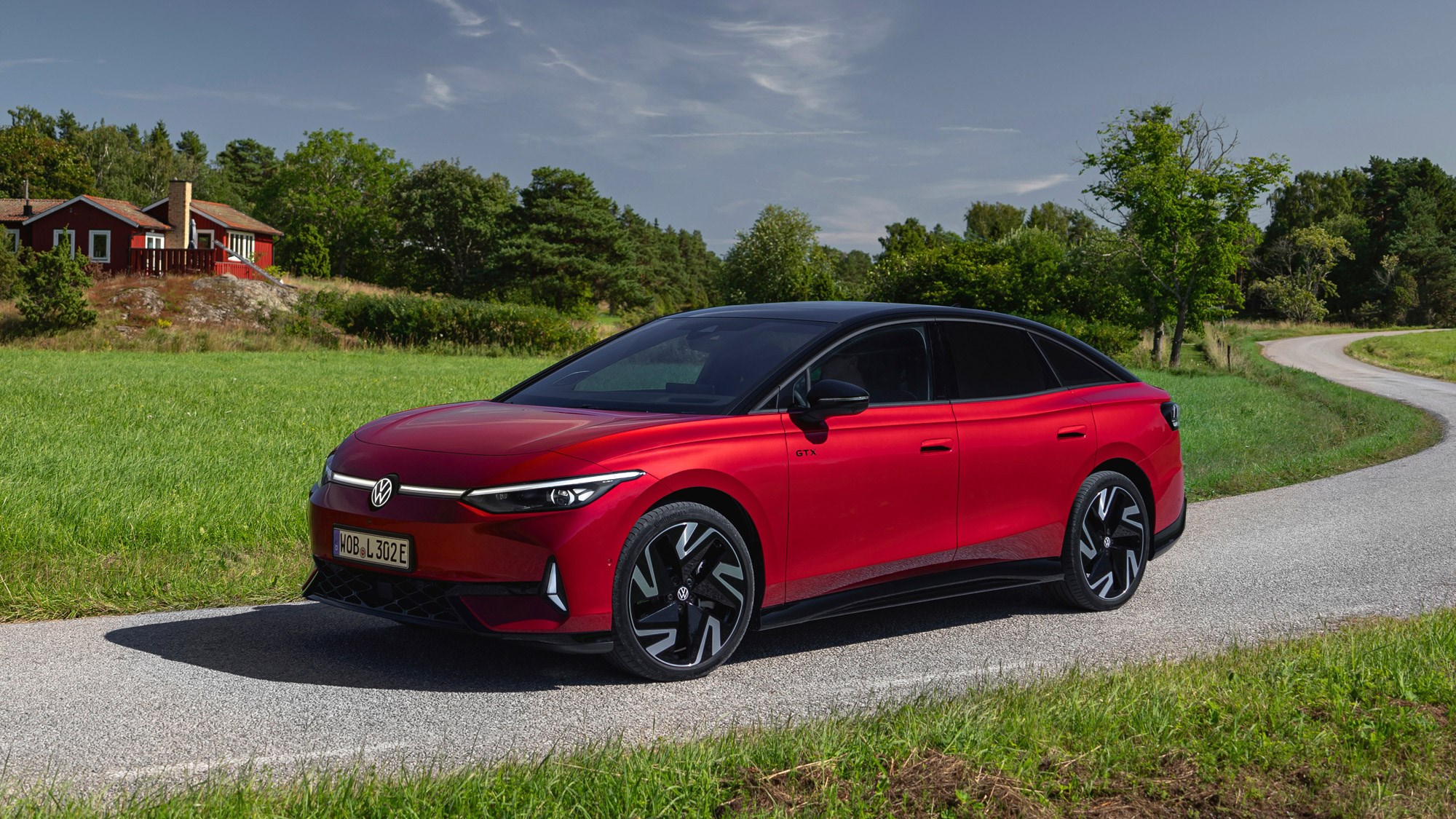
There’s the usual nip and tuck that any sportier Volkswagen gets – new bumpers and new wheels – along with some slight performance tweaks, including thicker anti-roll bars and standard-fit Dynamic Chassis Control (DCC).
What are the specs?
The GTX’s second electric motor offers only a fairly small contribution, at least in the electric car world, to the GTX’s performance figures, with total figures of 335bhp and 413lb ft of torque. Performance is brisk but never startling, with 0-62mph dispatched in 5.4 seconds, with the top speed capped to 112mph, as is the case for every electric Volkswagen due to efficiency reasons.
That said, the GTX shaves more than a second off the standard ID.7’s 0-62mph sprint time, coming in useful when overtaking or zipping down a motorway sliproad.
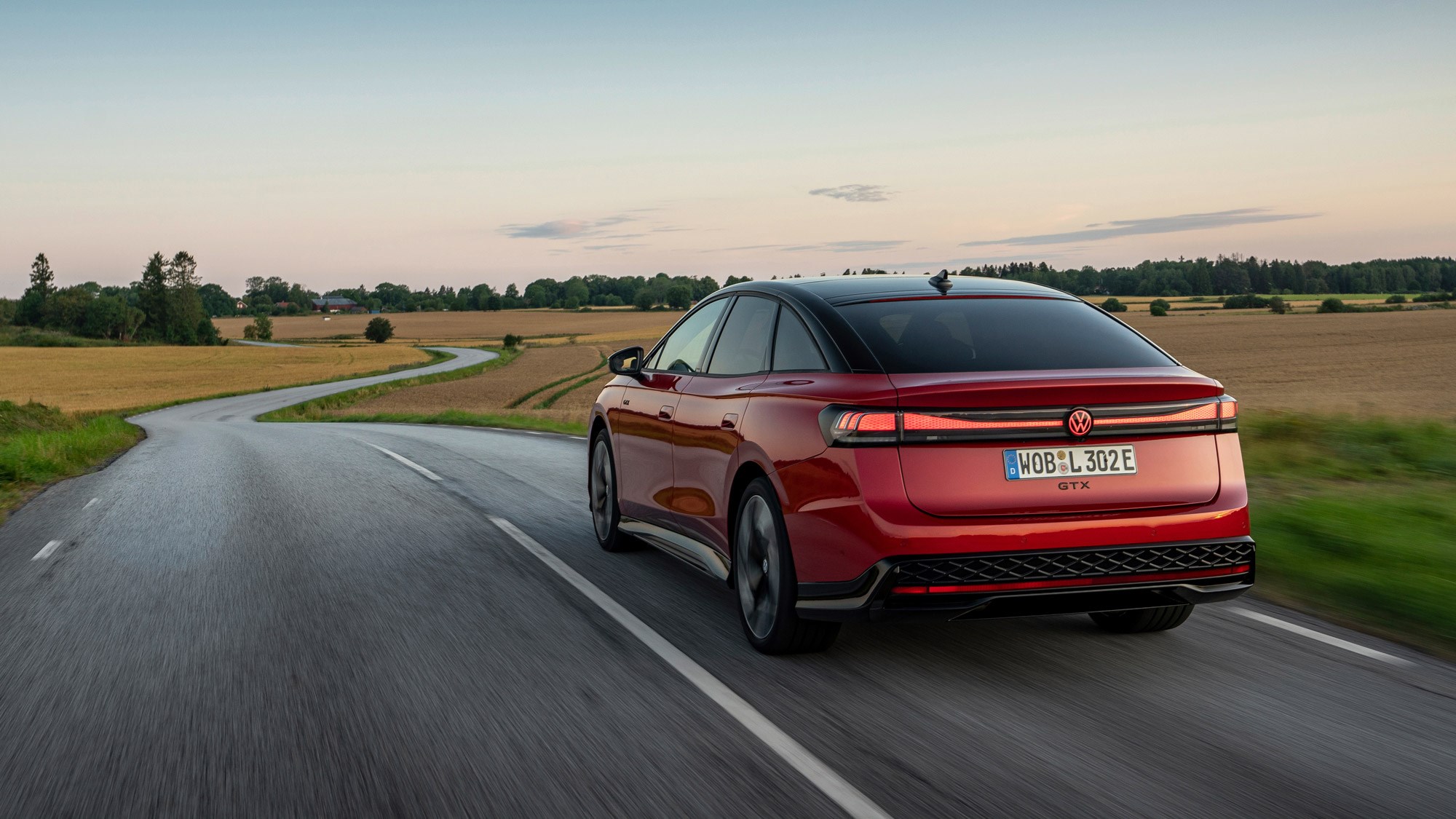
All GTXs also come equipped with the new 86kWh battery, allowing for a claimed electric range of 365 miles. That might sound good, and it is in many ways, but it’s some way off the claimed 436 miles from a non-GTX ID.7. For me, it’s hard to justify the loss of that much range for what are quite minimal performance gains.
How does it drive?
If you’re looking for a small dose of extra sportiness from your electric executive car, the ID.7 could fulfil your wishes. The extra pace certainly helps its eagerness, the regular car feels leisurely while the GTX is more lively, pinning you back in your seat but never in a neck-snapping Tesla Model 3 Performance way.
Changes to the steering are small but noticeable, and it feels a touch sharper. But driven back-to-back with a regular ID.7, the changes are small, and it never feels much more playful, arguably less so because of the extra security that comes from the GTX’s standard all-wheel-drive.
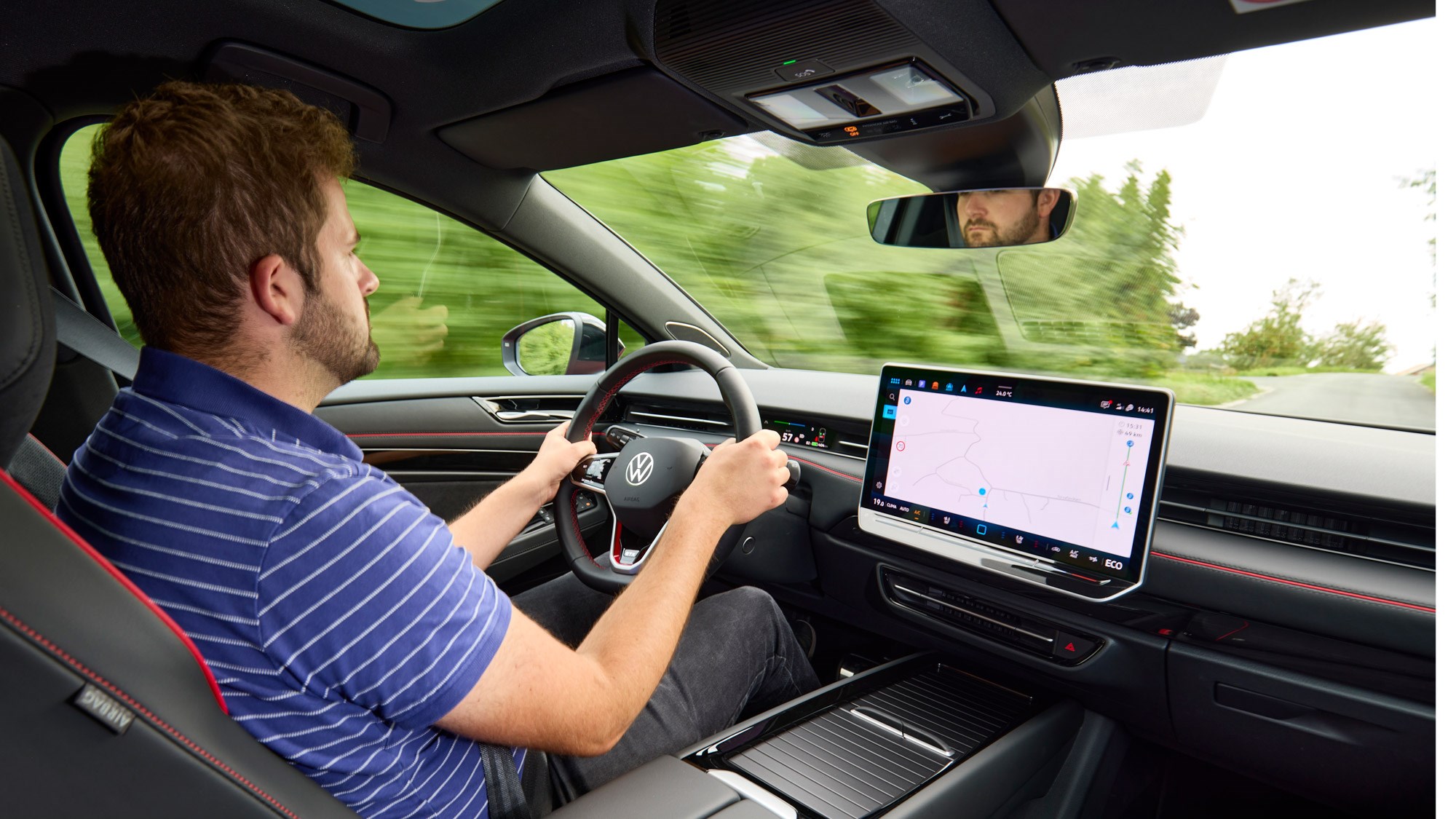
But impressively none of the GTX-ness has detracted from the standard ID.7’s talents. Volkswagen’s renowned dynamic chassis control (DCC) is standard on the GTX, rather than the usual costly extra. It’s the latest iteration of this setup and the breadth of its abilities is impressive, with a slider on the touchscreen letting you select where on the scale you want the GTX to be comfortable or sporty. Even in the harshest setting, though, and on the largest 21-inch wheels, the ride is more than livable.
What about the interior?
The standard ID.7’s interior is already a joyous place to spend time and the GTX’s cabin is unsurprisingly no different. There’s the usual GTI/GTX red stitching on the seats and steering wheel, and piping in the same colour on the seats and across the dashboard. It adds an extra degree of sportiness to the GTX, while microsuede upholstery on the seats and door cards is another welcome touch.
Standards slipped on the quality front with other electric Volkswagens, but things have been repaired with the ID.7. It feels like a genuinely premium product with soft-touch materials used in all the right places.
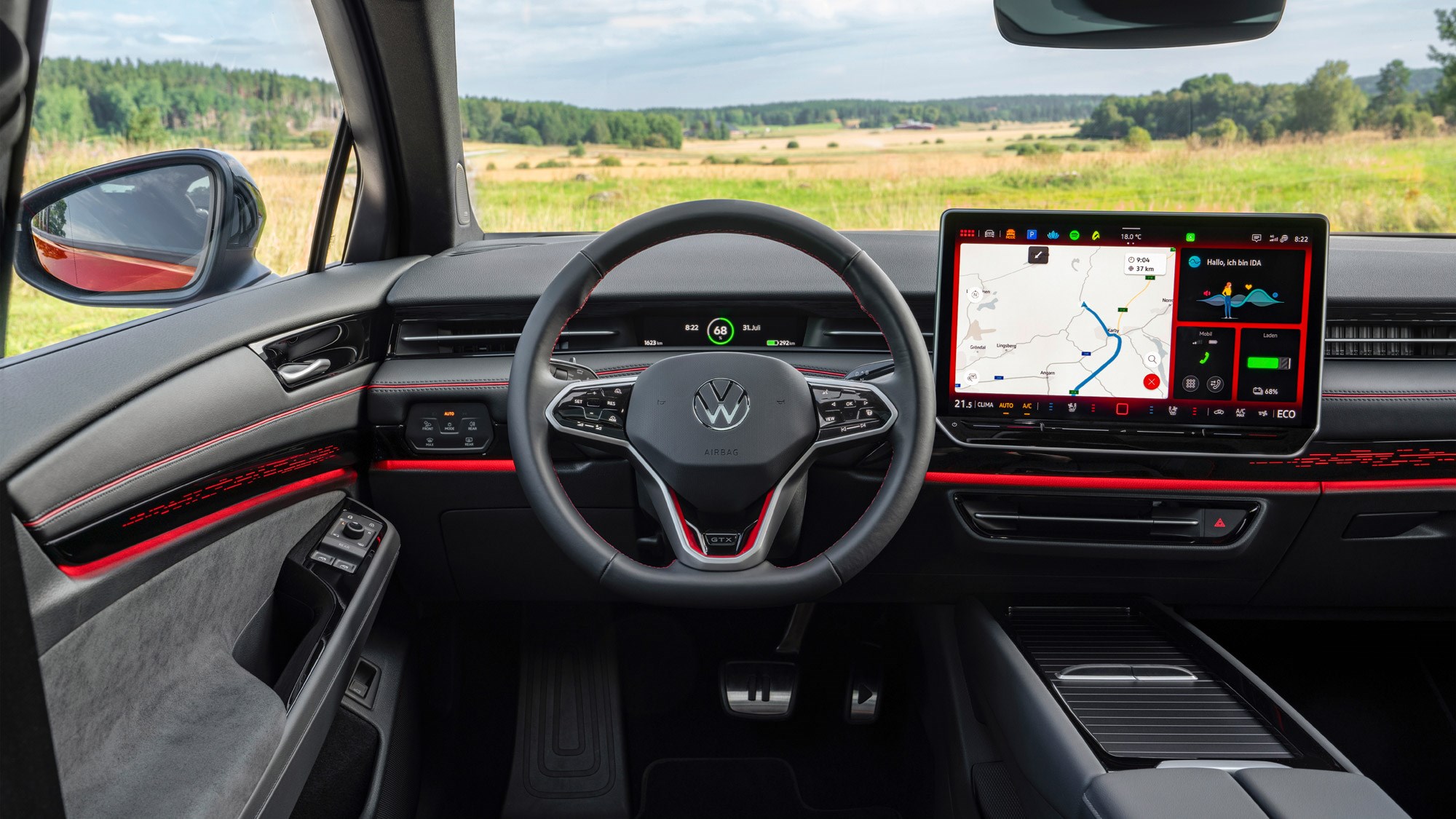
The 15-inch touchscreen dominates the cabin and is, again, a big step forward compared to the previous frustrating infotainment systems that adorned the earlier ID models. The touchscreen-everything approach still requires a bit of time to get used to, but by and large works well. One thing I can’t forgive is that to control the direction of the air vents you have to do it through the screen. Madness, and a classic example of a solution to a problem that didn’t exist.
The GTX is also no less practical than a regular ID.7, with plentiful rear-seat space for even taller adults and a massive boot. The Tourer is worth the extra expense if practicality is at the top of the priority list, mind.
Before you buy (trims and rivals)
The GTX sits at the top of the ID.7 line-up, and is unsurprisingly the most expensive. Prices start from £61,980 for the fastback and £62,670 for the Tourer. It’s by no means cheap, and works out around £6,500 more expensive than a regular ID.7 equipped with the same 86kWh ‘Pro S’ battery.
Though it struggles to justify the extra expense, the level of standard kit on the GTX is impressive. Standard features include electric, heated and ventilated front seats, Matrix LED headlights and a Harman Kardon sound system. But it’s disappointing that a heat pump, like on most electric Volkswagen Group cars, isn’t included as standard.
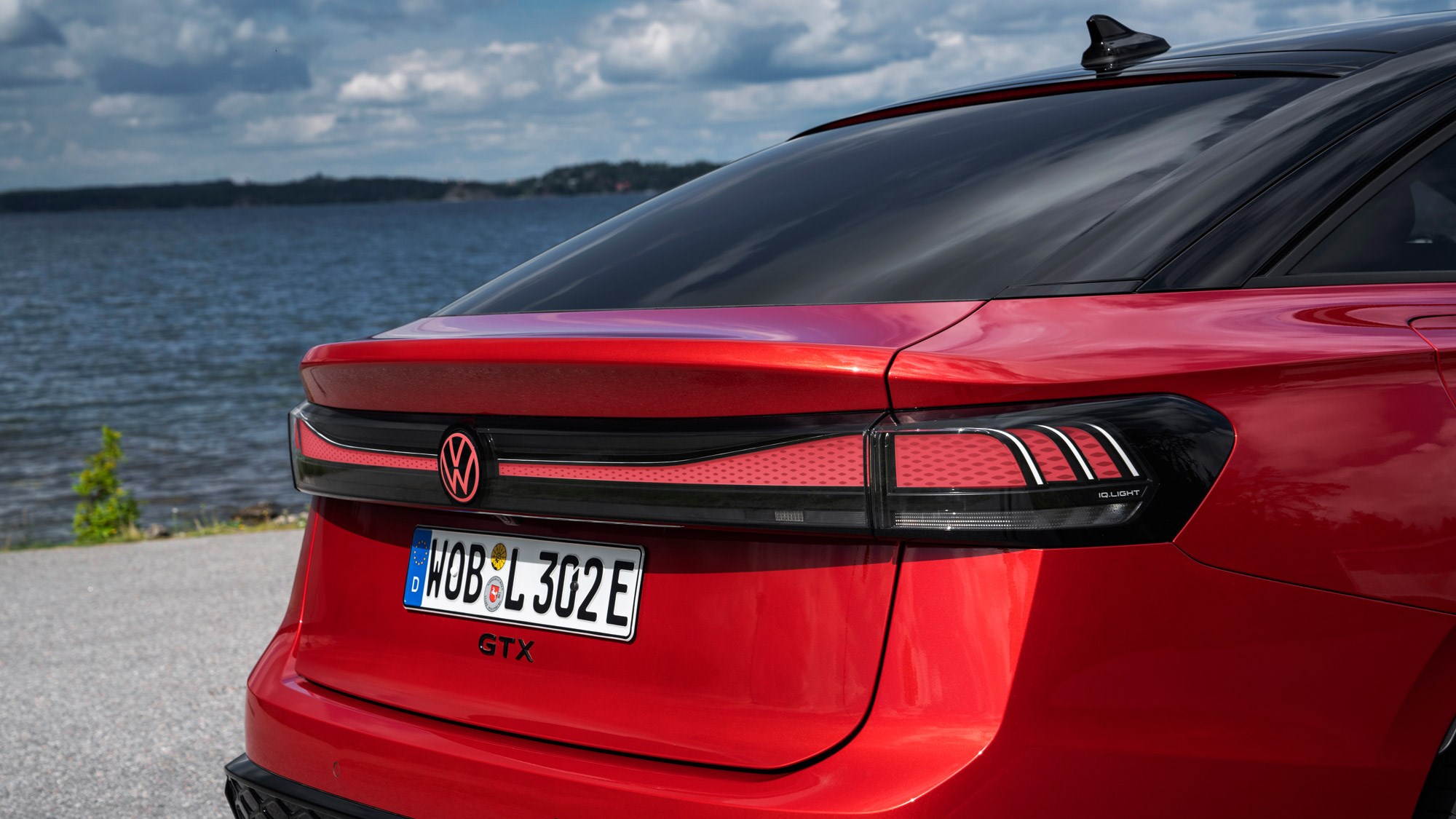
The ID.7’s rivals are a broad bunch. Though it’s easy to make comparisons with a Tesla Model 3, it’s far closer in size to the Model S. While more expensive than a Hyundai Ioniq 6 (it’s £54,000 for a similarly-powerful model), the ID.7 GTX is considerably cheaper than an entry-level BMW i5 and its £67,695 starting price.
As with any car in this class, it will come down to leasing costs. At the time of writing, there were some exceptional deals available on the regular ID.7 (from less than £300 a month), whereas the cheapest GTXs were north of £500 each month.
Verdict
The ID.7 is unquestionably the best GTX model yet as it brings a small dose of extra sportiness without sacrificing the standard car’s key talents. It’s a pleasantly quick, well-built and practical EV that would slot easily into family life, whether you opt for the fastback or Tourer estate.
But the additional £6,500 it commands over the standard ID.7 Pro S is hard to justify when you consider the loss of range and minimal performance gains. The best ID.7 continues to be the brilliant standard car.